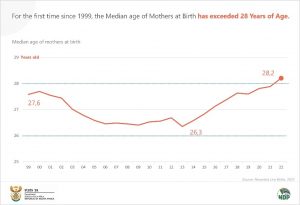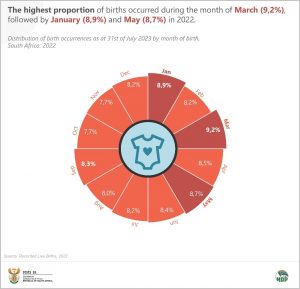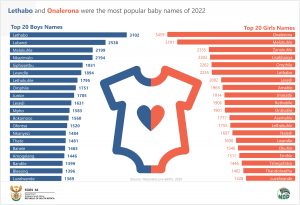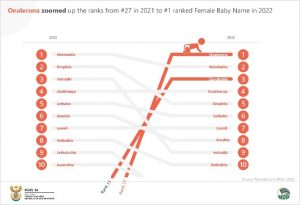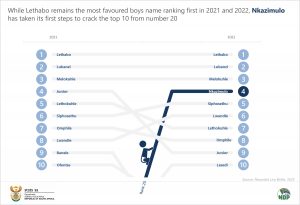Almost one million births registered at DHA offices in 2022
Live birth statistics provide a crucial glimpse into the dynamics of human populations, offering valuable insights into demographics, healthcare trends, and societal changes. Understanding live birth statistics is not merely an exercise in number-crunching; it is a gateway to comprehending the health and wellbeing of populations.
The data on Recorded Live Births indicates that the Department of Home Affairs registered a total of 998 362 births in 2022. Of these registrations, about 911 986 (91,3%) represent births that occurred in 2022, while 86 376 (8,7%) were late registrations for births that occurred in previous years.
Live birth statistics also serve as a critical indicator of maternal and child health and allows healthcare professionals and policymakers to assess the effectiveness of maternal healthcare systems and implement targeted interventions to improve outcomes for both mothers and infants.
The median age of mothers rose to 28,2 years in 2022, marking the highest median age documented since 1999. Nearly 70% percent of all births in 2022 were attributed to mothers aged 20–34 years. KwaZulu-Natal recorded the highest number of births among mothers aged 17 years or younger, followed by Eastern Cape and Limpopo
The highest proportion of births occurred during the month of March (9,2%), followed by January (8,9%).
The registration of births within the legally mandated 30-day period is a critical process, ensuring that every child is officially recognised and accounted for. Exploring the extent to which parents complied with the legal requirement to register their child’s birth within the stipulated timeframe is imperative. Birth registration is integral to establishing a person’s legal identity and facilitates access to essential services such as healthcare and education. While there may be robust registration systems in place, challenges persist.
78,0% of total births that occurred in 2022 were registered within the legal requirement of 30-day period after birth occurrence. Although registration within 30 days improved over time, 35,6% of teenage mothers (10-14 years) registered their births a year and above later.
Generally, birth registrations remain higher in the most populated provinces in South Africa. The highest proportion of births were registered in Gauteng and KwaZulu-Natal, at 23,2% and 22,0% respectively, followed by Limpopo at 12,4%. The provinces with lower birth registrations in 2022 were Free State at 4,7% and Northern Cape at 2,5%.
Delayed birth registration can have profound consequences. Addressing challenges surrounding birth registrations is crucial not only for legal compliance but also for ensuring that every child enjoys the rights and opportunities associated with official recognition from the very start of their journey through life. The data surrounding birth registration compliance in 2022 serves as a roadmap for future efforts to enhance this critical aspect of societal infrastructure.
When it comes to naming the newborn, parents often invest time and thought into selecting a name that carries sentimental meaning or pays homage to familial roots. Names may be chosen to honour ancestors, celebrate cultural heritage, or express the parents’ hopes and dreams for their child’s future.
According to the Recorded live births, 2022, the three most popular first names for males were Lethabo, followed by Lubanzi and Melokuhle. Among females, the most prevalent first names were Onalerona, Melokuhle, and Lisakhanya.
While Lethabo remains the most favoured boy’s name, ranking first in 2021 and 2022, Nkazimulo has taken its first steps to crack the top 10 from number 20, while Onalerona zoomed up the ranks from #27 in 2021 to #1-ranked female baby name in 2022.
For more information download the Recorded live births, 2022 report here.


